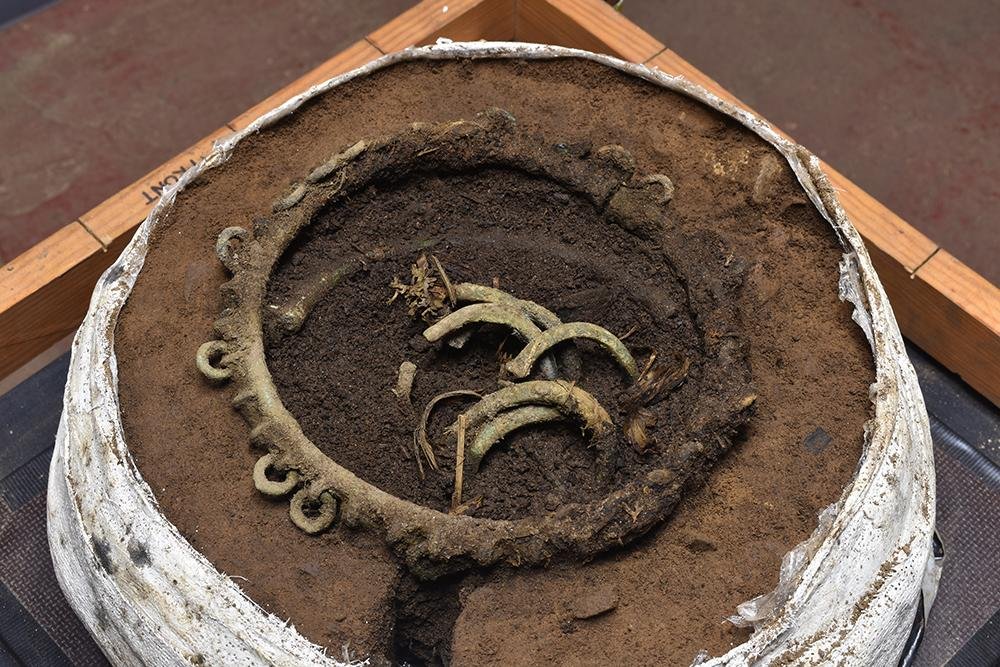Archaeologists from GUARD Archaeology have unearthed a Bronze Age hoard in Rosemarkie, Scotland. The find, which includes nine bronze bracelets and necklaces, was made in preparation for a new housing development by Pat Munro Homes.
 Credit: Guard Archaeology
Credit: Guard Archaeology
The hoard, dating back to around 1000 BCE, was discovered within a prehistoric settlement that featured six roundhouses and a Bronze Age cist grave. The discovery site also included a timber palisade fence that protected the settlement.
Rachel Buckley of GUARD Archaeology, who led the excavation, explained: “The recovery of the artifacts was successfully carried out under the controlled conditions necessary to preserve these highly significant objects, particularly the very delicate organic cords that tether some of the objects together.”The laboratory excavation, conducted alongside Conservator Will Murray from the Scottish Conservation Studio, revealed that the hoard consisted of six penannular bracelets, one cup-ended penannular bracelet, a complete neck ring, one partial neck ring, and intertwined fibrous plant cords.
One of the most remarkable aspects of this discovery is the preservation of the plant material. The fibrous cords used to knot the bracelets together have survived for about 3,000 years, a rare occurrence attributed to the anti-microbial properties of the copper in the bronze. As Buckley noted, “While there are other examples of hoards where it has been postulated that items were bound together due to their positioning, the vegetation in the Rosemarkie hoard has survived for approximately 3,000 years, proving that these artifacts were held together.”
The discovery was not just an isolated find but part of a broader archaeological context. Iraia Arabaolaza, who is managing GUARD Archaeology’s analyses, highlighted the importance of the surrounding settlement. “The shallow pit was dug to the required length and depth to accommodate the items before then being quickly backfilled. It may be that it was intended as temporary storage with the intention of recovering the hoard at some stage. The evidence from the surrounding settlement may reveal whether it was not just the hoard that was abandoned but the settlement as well,” she explained.
This find will complement previous discoveries made by GUARD Archaeology, such as another Bronze Age hoard in Carnoustie. Together, these findings contribute to a more comprehensive understanding of the cultural practices and societal structures of ancient Scottish communities.
The ongoing analysis by GUARD Archaeology and their partners will continue to shed light on why the hoard was buried and what it reveals about the broader historical context of the time.
Guard Archaeology





